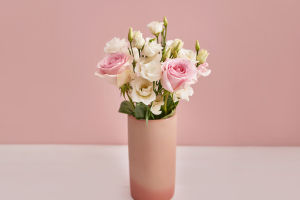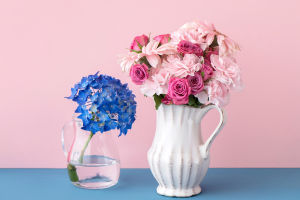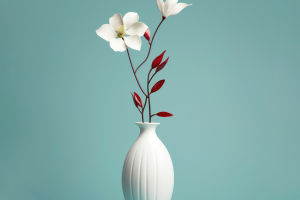Mastering Flower Arrangement
Flower arranging is an art form that involves carefully combining fresh flowers, foliage, and other plant elements to create beautiful floral works.
To master the skills of flower arranging and improve your floral artistry, it is essential to learn some basic techniques.
Below are five practical tips to help you enhance your flower arranging skills.
1. Choose the Right Flowers
The choice of flowers is the foundation of flower arranging. Different flowers have unique characteristics, and selecting the right flowers can make your arrangement more harmonious. Generally, flowers can be categorized into three types: focal flowers, secondary flowers, and filler flowers.
Focal flowers are the main point of interest in an arrangement, typically large and vibrant. Secondary flowers complement the focal flowers, playing a supporting role. Filler flowers are used to fill spaces and add depth to the arrangement. When selecting flowers, consider the color, shape, texture, and blooming season. Common flowers like roses, lilies, and carnations, or greenery like ivy and ferns, can add a natural touch to your arrangement.
2. Select the Right Vase
The choice of vase is crucial to the final look of your floral arrangement. The shape, color, and material of the vase directly affect how the flowers are presented.
Generally, the vase should be chosen based on the style of the arrangement and the type of flowers used. A tall vase is ideal for long or upright flowers like lilies or roses, while a low, wide vase works well for short and full blooms like peonies or tulips.
The color of the vase should be neutral or complement the hues of the flowers to avoid color clashes. A clear glass vase can highlight the natural beauty of the flowers, while ceramic or metal vases are suitable for creating a vintage or modern look.
3. Trim the Stems
Trimming the flower stems is an important step in flower arranging. It helps the flowers absorb water more efficiently and allows you to control their height and shape, making the arrangement more balanced.
Before arranging, use sharp flower scissors to cut the stems to the appropriate length, ensuring the cut is diagonal. This increases the surface area for water absorption and extends the life of the flowers. Remove leaves from the lower part of the stems to prevent them from touching the water and rotting.
4. The Rule of the Golden Triangle
Composition is key in flower arranging. To make the arrangement more harmonious, the placement of flowers should follow certain principles. The Rule of the Golden Triangle is one of the commonly used techniques for floral composition.
According to this rule, the flowers should be arranged within the "golden triangle" area inside the vase, formed by the bottom, two sides, and top of the vase. This arrangement ensures a balanced visual center, preventing the flowers from appearing crowded or too sparse, leading to a more aesthetically pleasing effect.
5. Maintain Freshness of the Flowers
Keeping flowers fresh is a crucial detail in flower arranging. To extend the life of the flowers, regularly change the water and ensure it is free from impurities. The water level in the vase should cover the lower half of the stems to prevent the flowers from being exposed to air.
In addition to clean water, you can add floral preservatives to the water to help extend the flowers' lifespan.
Flower arranging is an activity that combines art and technique. It not only beautifies spaces but also conveys emotions and beauty. With care, floral artistry can become a part of your life, bringing endless beauty and inspiration.


